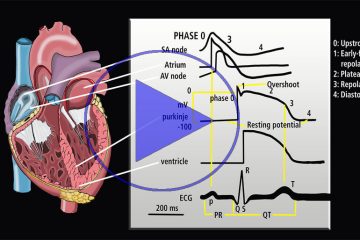Identifying EKG Clues for Potential Cardiac Risk
Critical reading and interpretation skills are vital for physical and occupational therapists because they enable the accurate and timely identification of life-threatening findings on medical records, such as EKG abnormalities that signal a risk for sudden cardiac death. Misinterpreting or overlooking these critical data points, like a prolonged QT interval or certain arrhythmias, could lead to inappropriate exertion during therapy, directly triggering a fatal event. By thoroughly and accurately interpreting this information, therapists can immediately stop or modify treatment and alert the medical team, potentially preventing a sudden cardiac arrest. This skill transforms the therapist from a treatment provider into an essential safety checkpoint, directly saving the patient’s life through proactive risk management.
The online course Acute Care Rehabilitation provides information on managing acute care situations.
Learn More
The Brugada pattern is a distinctive ECG finding associated with Brugada syndrome, a genetic disorder linked to SCD in patients with structurally normal hearts. (3)
In approximately 5 percent of sudden cardiac deaths, no demonstrable anatomic abnormality is found. Some cases are caused by sudden arrhythmia death syndrome. A prolonged QT interval is a common thread among the various entities associated with sudden arrhythmia death syndrome. (4)
Subscribe to the Healthclick Online Course Library
To learn more about cardiac acute care, and the importance of understanding EKG readings and common test results in relation to cardiac risk go to the Acute Care Course
Learn about our All Access Subscription

References
- Leonardo Calò, Oreste Lanza, Cinzia Crescenzi, Cristian Parisi, Germana Panattoni, Annamaria Martino, Marco Rebecchi, Pierpaolo Tarzia, Pellegrino Ciampi, Fabiana Romeo, Stefano Canestrelli, Elisa Silvetti, Ermenegildo De Ruvo, The value of the 12-lead electrocardiogram in the prediction of sudden cardiac death, European Heart Journal Supplements, Volume 25, Issue Supplement_C, May 2023, Pages C218–C226,
- Abdelghani SA, Rosenthal TM, Morin DP. Surface Electrocardiogram Predictors of Sudden Cardiac Arrest. Ochsner J. 2016 Fall;16(3):280-9. PMID: 27660578; PMCID: PMC5024811.
- El Sayed M, Goyal A, Callahan AL. Brugada Syndrome. [Updated 2023 Aug 8]. In: StatPearls [Internet]. Treasure Island (FL): StatPearls Publishing; 2025 Jan-
- Meyer JS, Mehdirad A, Salem BI, Kulikowska A, Kulikowski P. Sudden arrhythmia death syndrome: importance of the long QT syndrome. Am Fam Physician. 2003 Aug 1;68(3):483-8. Erratum in: Am Fam Physician. 2004 May 15;69(10):2324. PMID: 12924831.
